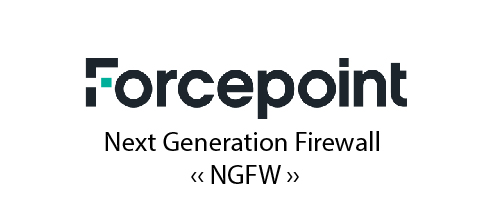Network Security is the practice of protecting the network infrastructure and data from unauthorized access, use, disclosure, modification, or destruction. It is important to have network security because it helps to safeguard the confidentiality, integrity, and availability of data, which are essential for any organization or individual.

Intrusion Detection and Prevention Systems (IPS)
Intrusion Detection and Prevention Systems (IPS) are security devices or software that monitor and analyze the network traffic and activities. They can detect and respond to anomalies or threats that may compromise the network security. They protect the confidentiality, integrity, and availability of data, which are essential for any organization or individual.
IPS can perform various functions, such as:
- Detection: They can identify and classify the potential attacks or intrusions on the network. They can use techniques such as signatures, heuristics, or behavior analysis to detect the attacks.
- Prevention: They can block or mitigate the attacks or intrusions on the network. They can use methods such as dropping packets, resetting connections, or alerting administrators to prevent the attacks.
- Analysis: They can provide detailed information and reports on the attacks or intrusions on the network. They can use tools such as logs, graphs, or dashboards to analyze the attacks.


Network Access Control (NAC)
Network Access Control (NAC) is a security process that regulates and restricts the access of users and devices to a network. It protects the confidentiality, integrity, and availability of data, which are essential for any organization or individual .
NAC involves various methods and technologies, such as:
- Device Identification: It recognizes and categorizes the devices that attempt to connect to the network, such as: laptops, smartphones, tablets, printers, or IoT devices. It can use methods such as MAC address, IP address, or certificates to identify the devices.
- Device Authentication: It verifies the identity and credentials of the devices before granting access to the network. It can use methods such as: passwords, biometrics, tokens, or certificates to authenticate the devices.
- Device Authorization: It determines the level of access and permissions that each device has on the network. It can use methods such as role-based access control (RBAC), attribute-based access control (ABAC), or policy-based access control (PBAC) to authorize the devices.
- Device Compliance: It checks and enforces the security policies and standards that each device must follow on the network. It can use methods such as antivirus, firewall, encryption, or patching to ensure the device compliance.
- Device Quarantine: It isolates and restricts the access of devices that are non-compliant, infected, or suspicious on the network. It can use methods such as blocking, alerting, or remediation to quarantine the devices.


Network Detection and Response (NDR)
Network Detection and Response (NDR) is a security technique that monitors and analyzes the network traffic and activities. It can detect and respond to anomalies or threats that may compromise the network security. It helps to protect the confidentiality, integrity, and availability of data, which are essential for any organization or individual.
NDR uses various methods and technologies, such as:
- Packet Capture: It collects and stores the data packets that travel on the network. It can use tools such as: Wireshark, tcpdump, or Npcap to capture the packets.
- Packet Analysis: It inspects and decodes the data packets to extract useful information, such as: source, destination, protocol, or payload. It can use tools such as Snort, Suricata, or Zeek to analyze the packets.
- Traffic Flow: It aggregates and summarizes the data packets into flows, which represent the communication sessions between devices on the network. It can use protocols such as: NetFlow, sFlow, or IPFIX to generate the flows.
- Flow Analysis: It examines and interprets the flows to identify patterns, trends, or anomalies on the network. It can use techniques such as: artificial intelligence (AI), machine learning (ML), behavioral analysis, and threat intelligence to analyze the flows.
- Alerting and Response: It notifies and assists the security teams or administrators to take appropriate actions against the anomalies or threats on the network. It can use methods such as: logging, reporting, alerting, or remediation to alert and respond.




Network Firewalls
Network Firewalls are security devices or software that control the network traffic and prevent unauthorized access to or from the network. They safeguard the confidentiality, integrity, and availability of data, which are essential for any organization or individual.
Network firewalls can perform various functions, such as:
- Filtering: They can allow or deny the network traffic based on rules, filters, or proxies. They can use criteria such as: source, destination, protocol, port, or content to filter the traffic.
- Logging: They can record and store the information about the network traffic and events. They can use tools such as: logs, reports, or alerts to track and analyze the traffic.
- NAT: They can translate the private IP addresses of the devices on the network to public IP addresses that can communicate with the internet. They can use methods such as: static NAT, dynamic NAT, or port address translation (PAT) to perform NAT.
- VPN: They can create secure and encrypted connections between devices on different networks. They can use protocols such as: Secure Sockets Layer (SSL) or Internet Protocol Security (IPsec) to establish VPN.






Network Performance Monitoring (NPM)
Network Performance Monitoring is the process of measuring and analyzing the quality and efficiency of the network traffic and activities. It helps to optimize the network performance, troubleshoot the network issues, and improve the user experience and satisfaction.
Network Performance Monitoring involves various methods and technologies, such as:
- Metrics: They are the quantitative indicators that reflect the network performance, such as: bandwidth, latency, jitter, packet loss, throughput, or availability. They can be measured using tools such as ping, traceroute, or speed test.
- Baselines: They are the normal or expected values of the metrics that represent the network performance under optimal conditions. They can be established using tools such as: historical data, benchmarks, or averages.
- Thresholds: They are the minimum or maximum values of the metrics that trigger an alert or action when they are crossed. They can be set using tools such as: rules, policies, or standards.
- Alerts: They are the notifications or messages that inform the network administrators or users about the network performance issues or anomalies. They can be delivered using tools such as: email, SMS, or dashboard.
- Actions: They are the responses or solutions that resolve the network performance issues or anomalies. They can be performed using tools such as: automation, optimization, or remediation.





Network Sandboxing
Network Sandboxing is a security technique that isolates and analyzes the suspicious or unknown files or programs on the network in a safe and controlled environment. It protects the network from advanced and zero-day malware attacks that may evade the traditional security solutions.
Network sandboxing uses various methods and technologies, such as:
- Emulation: It simulates the behavior and execution of the files or programs on the network using a virtual machine or software. It can use techniques such as: code analysis, dynamic analysis, or static analysis to emulate the files or programs.
- Simulation: It mimics the response and interaction of the files or programs on the network using a fake system or network. It can use techniques such as: honeypots, honeynets, or deception to simulate the files or programs.
- Detonation: It runs and observes the files or programs on the network using a real system or network. It can use techniques such as: sandbox appliances, cloud services, or endpoint agents to detonate the files or programs.



![]()

OT Security
OT Security is the practice of protecting the operational technology (OT) systems and networks from unauthorized access, use, disclosure, modification, or destruction. OT systems and networks are the ones that control and monitor the physical processes and devices in various industries, such as: manufacturing, energy, transportation, or healthcare. They are essential for the safety, productivity, and quality of the services and products that they provide.
OT security involves various methods and technologies, such as:
- Asset Discovery and Inventory: It identifies and catalogs all the OT assets and devices on the network, such as: sensors, controllers, actuators, or machines. It can use methods such as: scanning, crawling, or querying to discover the OT assets.
- Asset Management and Configuration: It creates, modifies, and deletes the OT assets and devices on the network. It can use methods such as: provisioning, deprovisioning, synchronization, or patching to manage the OT assets.
- Network Segmentation and Isolation: It divides and separates the OT network into smaller and more secure zones or subnets. It can use methods such as: firewall, router, switch, or virtual LAN (VLAN) to segment and isolate the OT network.
- Network Monitoring and Analysis: It observes and examines the OT network traffic and activities. It can use techniques such as: packet capture, packet analysis, flow analysis, or behavior analysis to monitor and analyze the OT network.
- Threat Detection and Response: It detects and responds to anomalies or threats that may compromise the OT security. It can use techniques such as: Artificial Intelligence (AI), Machine Learning (ML), behavioral analysis, and threat intelligence to detect and respond to threats.



Security Service Edge (SSE)
Security Service Edge (SSE) is a set of integrated, cloud-based security capabilities that protect users and resources from various cyber threats. SSE is the security component of the Secure Access Service Edge (SASE) framework, which combines networking and security services into one cloud platform.
SSE enables organizations to provide secure connectivity for their hybrid workforces, while reducing the complexity and cost of traditional network security solutions.
SSE can offer the following benefits:
- Deep Visibility into user and application behavior, which can help detect and respond to potential attacks.
- Improved Data Protection by using a zero-trust approach that minimizes the attack surface and prevents data loss or ransomware.
- Cost Savings by consolidating multiple security functions into a single cloud service that can be easily managed and scaled.
- Improved User Experience by reducing latency and improving performance for accessing web and cloud services.
- Improved Hybrid Work Support by enabling secure access to both cloud and on-premises resources and simplifying cloud migration.
![]()

Security Threat Intelligence Products & Services
Security Threat Intelligence Products & Services are solutions that provide knowledge, information and data about cybersecurity threats and other organization-specific threat exposures. They can help security and risk management leaders to evaluate, prioritize and mitigate the potential impact of cyberattacks on their digital businesses.
Security Threat Intelligence Products & Services Benefits:
- They help security teams to be more proactive, enabling them to take effective, data-driven actions to prevent cyberattacks before they occur.
- They help an organization better detect and respond to attacks in progress.
- They provide context and insights into the adversaries, their motivations, capabilities and tactics, techniques and procedures (TTPs).
- This help security teams to understand the threat landscape, anticipate future attacks and tailor their defenses accordingly.
- They deliver indicators of compromise (IOCs), such as malicious IP addresses, domains, hashes or URLs, that can be used to identify and block malicious activities on the network or endpoints.
- They support security decision-making processes by providing evidence-based recommendations, best practices and actionable advice on how to respond to specific threats or incidents.

![]()
![]()
Virtual Private Networks
Virtual Private Networks (VPN) is a technology that creates a secure and encrypted connection over the internet between a device and a network. A VPN allows the user to access online resources and services that may be restricted or censored in their location, as well as to protect their privacy and security from hackers, snoopers, or other malicious actors.
Why VPN is important?
- A VPN can help you to secure your network by preventing unauthorized access to your data and online activities. A VPN encrypts your traffic so that it cannot be read or modified by anyone who intercepts it.
- A VPN can help you to hide your private information by masking your IP address and location. A VPN assigns you a new IP address from a different server, making it appear as if you are browsing from another country or region. This can help you to avoid tracking, surveillance, or targeted ads based on your online behavior.
- A VPN can help you to prevent data throttling by hiding the amount of data you use from your internet service provider (ISP). Data throttling is when your ISP slows down your internet speed after you reach a certain limit of data usage. A VPN can bypass this limit by encrypting your data and making it unreadable to your ISP.
- A VPN can help you to avoid bandwidth throttling by hiding the type of websites or activities you engage in from your ISP. Bandwidth throttling is when your ISP slows down your internet speed based on the content or service you are accessing, such as streaming, gaming, or torrenting. A VPN can prevent this by changing your IP address and encrypting your traffic, making it impossible for your ISP to identify or discriminate your online activities.



Vulnerability Assessment
A Vulnerability Assessment is a process of identifying, evaluating and prioritizing the security weaknesses or flaws in a system, network or application.
Why Vulnerability Assessment is important?
- It can help you to protect your data and assets from cyberattacks by finding and fixing the vulnerabilities before they are exploited by hackers or malicious actors.
- It can help you to comply with security standards and regulations that require you to perform regular vulnerability assessments to ensure the safety and privacy of your customers’ or users’ data.
- It can help you to improve your security posture and performance by providing you with insights, recommendations and best practices on how to enhance your security controls, policies and procedures.
Types of Vulnerability Assessments:
- Network-based Assessment: This type scans the network devices, servers, firewalls and other components for vulnerabilities that can affect the network security.
- Host-based Assessment: This type scans the individual hosts, such as computers, laptops or mobile devices, for vulnerabilities that can affect the host security.
- Wireless Network Assessment: This type scans the wireless networks, such as Wi-Fi or Bluetooth, for vulnerabilities that can affect the wireless security.
- Application Assessment: This type scans the web applications, such as websites or mobile apps, for vulnerabilities that can affect the application security.
- Database Assessment: This type scans the databases or data systems, such as SQL or NoSQL, for vulnerabilities that can affect the data security.
![]()
![]()
![]()
SD - WAN
WAN Edge Infrastructure is a term that describes the networking and security solutions that enable connectivity between distributed IT resources, such as data centers, public clouds, SaaS applications, or branch offices.
WAN Edge Infrastructure Benefits:
- It can improve the performance and reliability of the network by using technologies such as: software-defined WAN (SD-WAN), which can dynamically route traffic over multiple paths based on the availability, quality, and cost of the links.
- It can enhance the security and compliance of the network by using technologies such as: virtualized network functions (VNFs), which can deliver firewall, VPN, or other services via software without requiring dedicated hardware.
- It can simplify the management and operation of the network by using technologies such as: cloud-based orchestration, which can automate the configuration, deployment, and monitoring of the network devices and services.
WAN Edge Infrastructure is a rapidly evolving market that is driven by the changing business requirements and application architectures of organizations.
WAN Edge Infrastructure Market Trends and Challenges:
- The increasing adoption of cloud-based applications and services, which require low-latency, high-bandwidth, and secure connectivity from any location.
- The growing complexity and diversity of the network environment, which involve multiple types of devices, links, protocols, and vendors.
- The rising demand for cost-efficiency and scalability of the network infrastructure, which require flexible and agile solutions that can adapt to changing needs and conditions.




WAN Optimization
WAN Optimization is a process of improving the efficiency and performance of data transfer over wide area networks (WANs), such as: the internet or wireless networks.
WAN Optimization is important for several reasons, such as:
- It can reduce latency and increase bandwidth by using techniques such as: traffic shaping, data compression, data deduplication, data caching, and protocol optimization. These techniques can help to prioritize and allocate network resources, eliminate redundant or unnecessary data, and streamline data transmission.
- It can enhance security and compliance by using techniques such as encryption, virtual private networks (VPNs), and quality of service (QoS). These techniques can help to protect data from unauthorized access or modification, create secure connections between remote locations, and ensure consistent and reliable network performance.
- It can simplify management and operation by using techniques such as cloud-based orchestration, software-defined WAN (SD-WAN), and virtualized network functions (VNFs). These techniques can help to automate network configuration, deployment, and monitoring, provide flexible and scalable network solutions, and deliver network services via software without requiring dedicated hardware.
![]()
![]()

![]()



